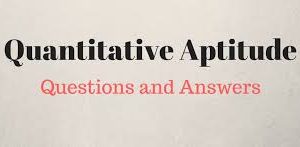Managing a remote workforce can feel like trying to assemble a puzzle with pieces scattered across the globe. But with the right tools, particularly mobile apps designed for seamless collaboration, this challenge transforms into an opportunity. Whether you’re a business owner, a project manager, or a team leader, having the right mobile app makes all the difference. But how do you design an app that ticks all the boxes? Let’s dive into this exciting topic and find out.
Understanding Remote Workforce Needs
Before diving into design specifics, it’s crucial to understand the unique needs of remote teams. Unlike traditional office setups, remote workers require tools that connect, empower, and support them no matter where they are. From project tracking to secure communication, their needs are diverse and interconnected.
Why does this matter?
Imagine trying to lead a team without knowing what motivates them. Designing a remote work app without understanding user needs is just as futile. Knowing these needs ensures the app truly adds value.
Why Mobile Apps Are Essential
Mobile apps have revolutionized the way teams collaborate. They’re accessible, versatile, and adaptable—perfect for today’s on-the-go workforce.
The competitive edge
Businesses in cities like Riyadh are leveraging these apps to stay ahead. A mobile app tailored for remote workforce management ensures efficiency, enhances productivity, and keeps teams connected across time zones.
Features to Prioritize in Remote Work Apps
A good app doesn’t just look appealing; it solves real problems. Here are must-have features:
- Task Management: Track progress, set deadlines, and assign roles.
- Video and Chat Integration: Ensure instant communication.
- Cloud Storage: Allow easy access to files and documents.
- Analytics: Monitor performance and identify improvement areas.
Why these features?
They address the core challenges of remote work—communication gaps, task visibility, and data accessibility.
User-Centric Design: The Key to Success
Ever used an app that felt clunky and unintuitive? Frustrating, right? User-centric design ensures that your app is not only functional but also enjoyable to use.
Tips for user-centric design
- Use clear navigation menus.
- Prioritize speed and performance.
- Offer customizable options to cater to individual preferences.
Seamless Communication: A Top Priority
In remote work, communication is the glue that holds teams together. Without it, even the best plans can fall apart.
Communication features to include
- Instant messaging.
- Video conferencing.
- Push notifications for urgent updates.
Boosting Productivity with Smart Features
Productivity tools within the app can make remote work feel effortless. From automated reminders to AI-driven insights, smart features enhance efficiency and reduce manual effort.
The Role of Security in Remote Work Apps
Security is non-negotiable, especially when dealing with sensitive company data. Features like two-factor authentication, end-to-end encryption, and regular security updates ensure peace of mind.
Localization: Catering to Riyadh’s Workforce
Every region has its nuances, and Riyadh is no exception. Designing an app with local languages, cultural considerations, and regional compliance laws makes it more relevant and appealing.
Testing and Feedback Loops
No app is perfect from the get-go. Rigorous testing and active feedback loops ensure continuous improvement. This iterative approach guarantees a polished final product.
Partnering with Experts in Riyadh
To create an app that truly delivers, collaborating with a mobile app development can make all the difference. They bring local expertise and a deep understanding of the market.
Future Trends in Remote Work Apps
The future is exciting! AI, VR-powered meetings, and predictive analytics are just a few trends transforming remote workforce management. Staying ahead of these trends is crucial.
Cost vs. Value: A Balanced Approach
While budget constraints are natural, investing in quality ensures long-term success. Think of it as buying a reliable car versus one that constantly breaks down.
Ensuring Scalability and Longevity
Your app should grow with your business. Scalability ensures the app remains efficient, no matter how large your team becomes.
The Importance of Updates and Support
An app is never truly finished. Regular updates, bug fixes, and customer support keep it relevant and functional.
Concluding Thoughts and Next Steps
Designing a mobile app for remote workforce management is both an art and a science. By understanding user needs, prioritizing essential features, and partnering with experts, you can create a tool that empowers your team and drives success. Ready to make the leap? Start your journey today!
FAQs
1. What are the key features of a remote workforce app?
Key features include task management, communication tools, cloud storage, and analytics to monitor performance.
2. Why should I hire a mobile app development company in Riyadh?
A local company offers insights into regional preferences, compliance, and cultural nuances, ensuring a tailored solution.
3. How can I ensure my app is secure?
Implement features like two-factor authentication, end-to-end encryption, and regular security updates.
4. What trends should I watch for in remote work apps?
AI integration, VR meetings, and predictive analytics are shaping the future of remote workforce management.
5. How often should an app be updated?
Apps should be updated regularly to fix bugs, improve features, and stay relevant to user needs.

